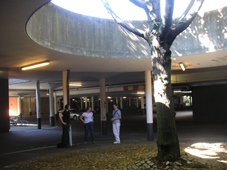
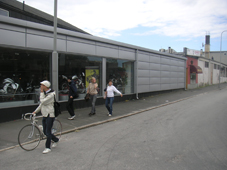
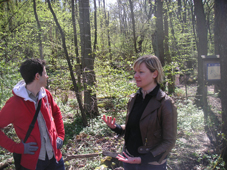
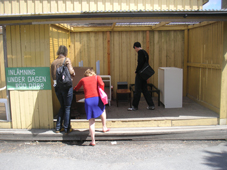

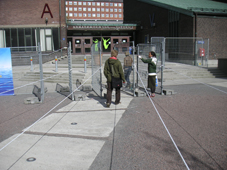
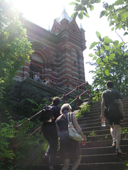
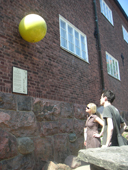
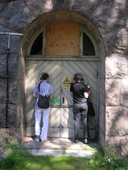
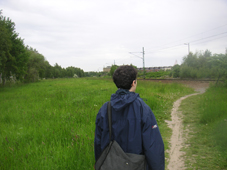
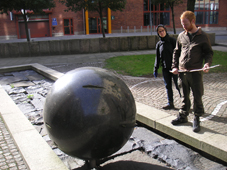

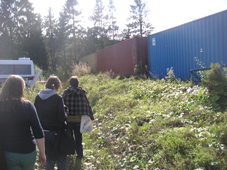

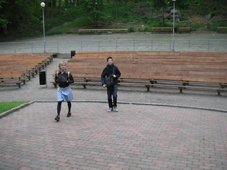
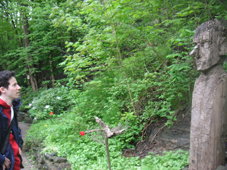
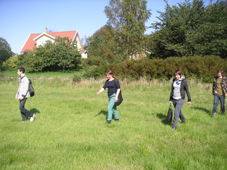

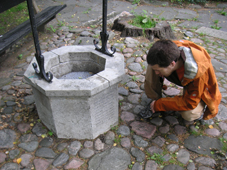
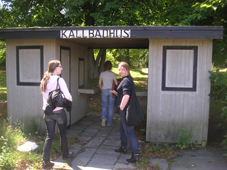
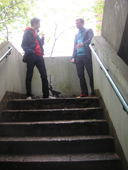

The Gothenburg Institute of Architecture is a project aimed at finding new strategies for navigating within, and relating to, built environments. The project also has as one of its aims to explore the idea of a participatory, experiential artwork where there is no real distinction between creator and audience and where the artwork does not have to be dependant on an exhibition space, nor does the end result of the artistic practice have to manifest as a specific object. The focus is rather on the idea of artistic cultural interaction as being based on discourse and as such possible to access in any location.
One of the strategies involved using two lists, one of specific sites in the city (usually squares and other common meeting places) and the other of a variety of themes, such as "dreams", "politics", "spaces in between", "water", "dirt" etc. Using dice a site was paired with a theme. This information was then conveyed to the participants a few days prior to the walk. Each participant was to think of a spot somewhat in the vicinity of the chosen site (usually a walking radius of 30 minutes was suggested) which they associated with the theme. On the designated time for the walk everyone met up and the various spots chosen by the participants were visited. Each participant talked about their reasons for selecting the site. The theme usually also carried over into the stretches connecting the sites, altering the perception of them. By consciously changing the way the environments were interpreted and by emphasising subjective associations and the creation of personal and group narratives it became possible to subvert other "official" or more obvious readings of them. Through these re-imaginings an arena was created within which a different set of possible actions could be carried out.
Another strategy involved randomly choosing bus and tram stops and travelling to them. Once we arrived at the spot we would navigate using an eight-sided dice to choose directions (each number on the dice corresponded to one of the eight cardinal directions of the compass) at set intervals of time. Here the idea was to use random processes to completely subvert and go beyond our own notions of the city, to wind up in places we might otherwise never have experienced due to the limits of habit and our own views of our environment.
Yet another approach to exploring the city was based on pure association, reading symbols and signs and trying to connect and follow them. Here a variety of symbolic systems could overlap and connect -sculptures based on mythological motifs or historical figures, advertisements, random debris, architectural styles or synchronistic events. The walks would end whenever the group felt they had arrived at a place which they considered to be some kind of culmination of whatever ideas had been manifesting themselves. Based on the associations connected with the site which the group had arrived at, a starting point for the next walk was chosen.

